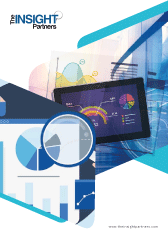$4450
$3560
The Cybersecurity Market size is projected to reach US$ 228.33 billion in 2024 and is projected to reach US$ 552.35 billion by 2031; it is expected to register a CAGR of 13.8% during 2025–2031.
Cybersecurity Market Analysis
The emergence of cloud computing, remote work, and digital transformation initiatives has increased the potential attack surface, making businesses more vulnerable to advanced cyber threats. To address these risks, organizations are implementing proactive cybersecurity strategies such as zero-trust architecture, AI-driven threat detection, and employee training programs to enhance their defense capabilities. Moreover, regulatory frameworks such as GDPR, CCPA, and India’s Digital Personal Data Protection Act are placing increased emphasis on data protection, driving businesses to implement robust cybersecurity policies and governance models. According to the Privacy Laws and International Business Report, as of 2023, 83% of countries had passed data protection and privacy legislation, in contrast to 66% in 2020. The General Data Protection Regulation (GDPR), established in 2018, is a comprehensive data privacy framework enacted by the European Union (EU) to safeguard the personal information of individuals.
Cybersecurity Market Overview
Cybersecurity refers to the practices, technologies, and strategies used to protect an organization’s digital assets, including systems, networks, applications, and data, from cyber threats such as hacking, malware, phishing, ransomware, and insider attacks. In today’s increasingly digital and interconnected world, cybersecurity has become a core business function, critical to maintaining operational continuity, safeguarding sensitive information, and preserving brand reputation. From a business standpoint, cybersecurity is not just an IT concern; it is a strategic priority. A single security breach can lead to significant financial losses, regulatory penalties, disruption of business operations, and a loss of customer trust. Therefore, companies are investing heavily in advanced security solutions such as firewalls, intrusion detection systems, endpoint protection, identity and access management (IAM), encryption, and security information and event management (SIEM) tools.
Customize Research To Suit Your Requirement
We can optimize and tailor the analysis and scope which is unmet through our standard offerings. This flexibility will help you gain the exact information needed for your business planning and decision making.
Cybersecurity Market: Strategic Insights


Naveen
Have a question?
Naveen will walk you through a 15-minute call to present the report’s content and answer all queries if you have any.
 Speak to Analyst
Cybersecurity Market Drivers and Opportunities
Speak to Analyst
Cybersecurity Market Drivers and Opportunities
Customize Research To Suit Your Requirement
We can optimize and tailor the analysis and scope which is unmet through our standard offerings. This flexibility will help you gain the exact information needed for your business planning and decision making.
Cybersecurity Market: Strategic Insights


Naveen
Have a question?
Naveen will walk you through a 15-minute call to present the report’s content and answer all queries if you have any.
 Speak to Analyst
Speak to Analyst
Market Drivers:
Rise in Cyber Threats and Attacks:
Cyberattacks pose a significant risk to businesses, with incidents continuing to rise due to technological advancements. Computer malware, data breaches, and denial of service (DoS) are a few examples of cyber risks. an upsurge in the number of cyberattacks has bolstered the importance of cybersecurity to safeguard critical infrastructures and ensure data safety, fueling cybersecurity market growth.
Stringent Government Regulations and Compliance:
Organizations of all sizes worldwide must comply with complex regulations related to data and cybersecurity. .Organizations must enhance their cybersecurity measures to comply with various regulations and protect sensitive data. Therefore, stringent government regulations, such as GDPR, CCPA, and HIPAA, drive the cybersecurity market.
Surge in Need to Protect Business Assets from Threats:
The escalating need to protect business-critical assets from increasingly sophisticated and frequent cyber threats is a key driver for the global cybersecurity market. As the cyber threat landscape continues to evolve, it compels businesses to prioritize cybersecurity as a core component of their digital strategy, ensuring business continuity, regulatory compliance, and the protection of valuable digital assets in an ever-changing environment.
Market Opportunities:
Adoption of Cloud-Based Cybersecurity Solutions Among SMEs:
Small and medium-sized enterprises (SMEs), which often lack dedicated in-house IT teams and sophisticated security infrastructure, are increasingly turning to cloud-based cybersecurity solutions as a practical and scalable alternative to traditional on-premise systems.
Growing Initiatives by Market Players:
The rise in product innovation and tailored solutions, particularly targeting underserved segments such as small and medium-sized enterprises (SMEs) and industry-specific verticals, such as healthcare, finance, and critical infrastructure, is expected to provide growth opportunities to the market players.
Cybersecurity Market Report Segmentation Analysis
The cybersecurity market is divided into different segments to give a clearer view of how it works, its growth potential, and the latest trends. Below is the standard segmentation approach used in most industry reports:
By Component:
Solution:
Cybersecurity solutions protect a company's digital assets, systems, and data from threats such as hackers, malware, and data breaches. These solutions include technologies, processes, and practices designed to safeguard critical information, ensure business continuity, and maintain customer trust.Services:
Cybersecurity services are professional services that help businesses protect their digital infrastructure, data, and operations from cyber threats. These services are delivered by in-house teams or external providers and are tailored to the specific needs and risk profile of each organization. Key cybersecurity services include risk assessments, vulnerability management, threat monitoring, incident response, and compliance support.
By Type:
Network Security:
Network security refers to the strategies and actions taken to protect a company's data and IT infrastructure from unauthorized access, misuse, or cyberattacks. It focuses on ensuring the confidentiality, integrity, and availability of data as it moves across and within a business network.Endpoint Security:
Endpoint security is the practice of securing devices such as laptops, desktops, servers, and other connected endpoints from cyber threats. These devices, whether on-premises or cloud-based, serve as gateways to an organization's network, making them prime targets for attackers.Application Security:
Application security is the process of developing and maintaining software to safeguard it against cyber threats such as unauthorized access, data breaches, and code manipulation. It involves integrating security features during the design, development, and testing phases, as well as applying protective measures after the application is deployed.Infrastructure Security:
Infrastructure security in the cybersecurity market refers to the protection of critical IT systems, networks, data centers, and cloud environments that support an organization's operations. It involves a combination of technologies, best practices, and governance policies designed to safeguard the foundational components of an organization's digital ecosystem from cyber threats, downtime, and unauthorized access.Others:
Others include data security and cloud security. Data security is the practice of protecting digital information throughout its entire lifecycle to prevent corruption, theft, or unauthorized access. It encompasses all components involved—hardware, software, storage devices, and user endpoints, as well as access controls, administrative policies, and organizational procedures.
By Organization Size:
- Large Enterprises
- SMEs
By Industry Vertical:
- BFSI
- IT and Telecom
- Government
- Healthcare
- Manufacturing
- Retail and Ecommerce
- Others
By Geography:
- North America
- Europe
- Asia Pacific
- South & Central America
- Middle East & Africa
The North America cybersecurity market is the largest globally, as the region is a leader in technological innovation and digital transformation. It benefits from a mature IT and cloud infrastructure, which has laid a strong foundation for the widespread adoption of advanced cybersecurity solutions
Cybersecurity Market Report Scope
Cybersecurity Market Share Analysis by Geography
The Asia Pacific region is emerging as one of the fastest-growing markets for cybersecurity, fueled by, rapid digital transformation and a burgeoning IT sector are fueling the demand for cybersecurity solutions. Emerging markets in South & Central America, the Middle East, and Africa also have many untapped opportunities for cybersecurity providers to expand.
The cybersecurity market grows differently in each region. This is because of factors like rising cases of cybercrimes and data breaches and the growing digital public infrastructure. Below is a summary of market share and trends by region:
1. North America
Market Share:
Holds a major share of the global cybersecurity market
Key Drivers:
- High concentration of enterprises and tech companies
- Frequent high-profile cyberattacks driving demand for protection
- Government initiatives like CISA and cybersecurity frameworks (e.g., NIST)
Trends:
Rapid adoption of zero-trust security architecture
2. Europe
Market Share:
Substantial shareKey Drivers:
- Strict privacy regulations (e.g., GDPR, NIS2 Directive)
- Push for digital sovereignty and local data control
- Emphasis on secure critical infrastructure (energy, banking, health
Trends:
Rising demand for endpoint security and managed detection services
3. Asia Pacific
Market Share:
Fastest-growing region with rising market share every yearKey Drivers:
- Surge in cyberattacks targeting growing digital economies
- National cybersecurity strategies (e.g., India, Japan, Singapore)
- Booming digital services and cloud infrastructure
Trends:
Governments mandating cybersecurity compliance in digital sectors
4. South and Central America
Market Share:
Growing market with steady progressKey Drivers:
- Rise in cybercrime targeting financial and public institutions
- Growing e-commerce and cloud adoption
- Regional regulations pushing for better data protection
Trends:
Growth in demand for affordable and managed security services
5. Middle East and Africa
Market Share:
Although small, but growing quicklyKey Drivers:
- Increased digital transformation, especially in the Gulf Cooperation Council (GCC)
- National cybersecurity programs (e.g., Saudi Vision 2030, UAE cybersecurity strategy)
- Expanding financial and telecom sectors
Trends:
Investment in national cybersecurity infrastructure and talent development.
Cybersecurity Market Players Density: Understanding Its Impact on Business Dynamic
High Market Density and Competition
The cybersecurity market is highly competitive, with global players like Palo Alto Networks, Cisco, Fortinet, Check Point, and CrowdStrike dominating. Regional and niche players such as Kaspersky (Russia), Qihoo 360 (China), and Acronis (Europe) contribute to a dynamic landscape.
This high level of competition urges companies to stand out by offering:
- AI and machine learning-based threat detection
- Advanced endpoint and cloud workload protection
- Integrated cybersecurity platforms (XDR, SIEM, SOAR)
- Subscription and as-a-service pricing models
Opportunities and Strategic Moves
- Partnerships with governments, telecom operators, and cloud providers are key to growth
- Focus on cybersecurity-as-a-service for SMEs and mid-sized businesses
- Investment in training and cyber awareness to tackle the skills gap
- Expansion into emerging markets and development of lightweight, scalable solutions
Major Companies operating in the Cybersecurity Market are:
- International Business Machines Corp
- Oracle Corp
- Open Text Corp
- SAP SE
- Cisco Systems Inc
- Microsoft Corp
- Broadcom Inc
- Palo Alto Networks Inc
- CrowdStrike Holdings Inc
- Fortinet Inc
Disclaimer: The companies listed above are not ranked in any particular order.
Other companies analysed during the course of research:
- Ping Identity
- SentinelOne Inc
- Sophos Ltd.
- Check Point Software Technologies Ltd
- Cybereason Inc
- Trend Micro Incorporated
- BlackBerry Limited
- Bitdefender
- ESET, spol. s r.o
- Fujitsu
- LevelBlue
- Amazon Web Services
- Nexus Group
- Barracuda Networks, Inc.
- Zscaler
- Cloudflare
- McAfee
- Rapid7
- Okta
- Darktrace
- Proofpoint
- Tenable
- Qualys
- CyberArk
- KnowBe4
Cybersecurity Market News and Recent Developments
IBM announced the introduction of generative AI capabilities
In August 2024, IBM (NYSE: IBM) announced the introduction of generative AI capabilities to its managed Threat Detection and Response Services, utilized by IBM Consulting analysts to advance and streamline security operations for clients. Built on IBM's watsonx data and AI platform, the new IBM Consulting Cybersecurity Assistant is designed to accelerate and improve the identification, investigation, and response to critical security threats.
Oracle announced the Oracle Defense Ecosystem
In June 2025, Oracle announced the Oracle Defense Ecosystem, a first-of-its-kind global initiative to redefine the delivery of defense and government technology innovation. The ecosystem is designed to strengthen U.S. and allied national security and help accelerate the disruptive potential of emerging defense technology by creating new opportunities for defense innovators to leverage the latest cloud and AI technologies. Initial members of the Oracle Defense Ecosystem include Arqit, Blackshark.ai, Entanglement, Fenix Group, now part of Nokia Federal Solutions, Koniku, Kraken, Mattermost, Metron, SensusQ, and Whitespace.
OpenText (NASDAQ: OTEX, TSX: OTEX) announced Webroot Total Protection
In February 2025, OpenText (NASDAQ: OTEX, TSX: OTEX) announced Webroot Total Protection, an all-in-one cybersecurity solution built to go beyond traditional device security to deliver comprehensive digital life protection for individuals and families. With identity protection, VPN, parental controls, and unlimited cloud backup, users can safeguard their data, privacy, and online activities—all from a single, seamless platform.
Cisco Systems, Inc. has announced the launch of the Cisco Cybersecurity Center of Excellence in Tokyo
In June 2024, Cisco Systems, Inc., a global technology leader, has announced the launch of the Cisco Cybersecurity Center of Excellence in Tokyo, dedicated to enhancing Japan’s cybersecurity defenses and digital resilience. The Center will play a pivotal role in shaping cybersecurity policies, fortifying threat intelligence collaborations, and expanding cybersecurity training to increase the pool of skilled professionals in the field. Its mission is to foster a secure, ethical, and robust digital ecosystem that aligns with Japan’s strategic objectives
Cybersecurity Market Report Coverage and Deliverables
The "Cybersecurity Market Size and Forecast (2021–2031)" report provides a detailed analysis of the market covering below areas:
- Cybersecurity Market size and forecast at global, regional, and country levels for all the key market segments covered under the scope
- Cybersecurity Market trends, as well as market dynamics such as drivers, restraints, and key opportunities
- Detailed PEST and SWOT analysis
- Cybersecurity Market analysis covering key market trends, global and regional framework, major players, regulations, and recent market developments
- Industry landscape and competition analysis covering market concentration, heat map analysis, prominent players, and recent developments for the Cybersecurity Market
- Detailed company profiles

Report Coverage
Revenue forecast, Company Analysis, Industry landscape, Growth factors, and Trends

Segment Covered
This text is related
to segments covered.

Regional Scope
North America, Europe, Asia Pacific, Middle East & Africa, South & Central America

Country Scope
This text is related
to country scope.
Frequently Asked Questions
The main categories include:
1. Network Security
2. Endpoint Security
3. Application Security
4. Infrastructure Security
As of 2024, the global cybersecurity market is valued around USD 228.33 billion, with forecasts projecting growth to USD 552.35 billion by 2031, driven by the rise in cyber threats and attacks.
Integration of AI in cybersecurity solutions is one of the key trends in the market.
The market is projected to grow at a CAGR of 13.8% from 2025 to 2031, depending on the region and subsegment.
Cybersecurity comprises:
1. Solution
2. Services
Key sectors include:
1. BFSI
2. IT and Telecom
3. Government
4. Healthcare
5. Manufacturing
6. Retail and E-commerce
Leading companies include:
1. Microsoft
2. Broadcom
3. Cisco Systems, Inc
4. IBM Corporation
5. Palo Alto Networks
North America leads in market share
Asia-Pacific, especially India and China, are witnessing the fastest growth due to digital transformation and regulatory mandates
The List of Companies - Cybersecurity Market
- International Business Machines Corp
- Oracle Corp
- Open Text Corp
- SAP SE
- Cisco Systems Inc
- Microsoft Corp
- Broadcom Inc
- Palo Alto Networks Inc
- CrowdStrike Holdings Inc
- Fortinet Inc
The Insight Partners performs research in 4 major stages: Data Collection & Secondary Research, Primary Research, Data Analysis and Data Triangulation & Final Review.
- Data Collection and Secondary Research:
As a market research and consulting firm operating from a decade, we have published many reports and advised several clients across the globe. First step for any study will start with an assessment of currently available data and insights from existing reports. Further, historical and current market information is collected from Investor Presentations, Annual Reports, SEC Filings, etc., and other information related to company’s performance and market positioning are gathered from Paid Databases (Factiva, Hoovers, and Reuters) and various other publications available in public domain.
Several associations trade associates, technical forums, institutes, societies and organizations are accessed to gain technical as well as market related insights through their publications such as research papers, blogs and press releases related to the studies are referred to get cues about the market. Further, white papers, journals, magazines, and other news articles published in the last 3 years are scrutinized and analyzed to understand the current market trends.
- Primary Research:
The primarily interview analysis comprise of data obtained from industry participants interview and answers to survey questions gathered by in-house primary team.
For primary research, interviews are conducted with industry experts/CEOs/Marketing Managers/Sales Managers/VPs/Subject Matter Experts from both demand and supply side to get a 360-degree view of the market. The primary team conducts several interviews based on the complexity of the markets to understand the various market trends and dynamics which makes research more credible and precise.
A typical research interview fulfils the following functions:
- Provides first-hand information on the market size, market trends, growth trends, competitive landscape, and outlook
- Validates and strengthens in-house secondary research findings
- Develops the analysis team’s expertise and market understanding
Primary research involves email interactions and telephone interviews for each market, category, segment, and sub-segment across geographies. The participants who typically take part in such a process include, but are not limited to:
- Industry participants: VPs, business development managers, market intelligence managers and national sales managers
- Outside experts: Valuation experts, research analysts and key opinion leaders specializing in the electronics and semiconductor industry.
Below is the breakup of our primary respondents by company, designation, and region:

Once we receive the confirmation from primary research sources or primary respondents, we finalize the base year market estimation and forecast the data as per the macroeconomic and microeconomic factors assessed during data collection.
- Data Analysis:
Once data is validated through both secondary as well as primary respondents, we finalize the market estimations by hypothesis formulation and factor analysis at regional and country level.
- 3.1 Macro-Economic Factor Analysis:
We analyse macroeconomic indicators such the gross domestic product (GDP), increase in the demand for goods and services across industries, technological advancement, regional economic growth, governmental policies, the influence of COVID-19, PEST analysis, and other aspects. This analysis aids in setting benchmarks for various nations/regions and approximating market splits. Additionally, the general trend of the aforementioned components aid in determining the market's development possibilities.
- 3.2 Country Level Data:
Various factors that are especially aligned to the country are taken into account to determine the market size for a certain area and country, including the presence of vendors, such as headquarters and offices, the country's GDP, demand patterns, and industry growth. To comprehend the market dynamics for the nation, a number of growth variables, inhibitors, application areas, and current market trends are researched. The aforementioned elements aid in determining the country's overall market's growth potential.
- 3.3 Company Profile:
The “Table of Contents” is formulated by listing and analyzing more than 25 - 30 companies operating in the market ecosystem across geographies. However, we profile only 10 companies as a standard practice in our syndicate reports. These 10 companies comprise leading, emerging, and regional players. Nonetheless, our analysis is not restricted to the 10 listed companies, we also analyze other companies present in the market to develop a holistic view and understand the prevailing trends. The “Company Profiles” section in the report covers key facts, business description, products & services, financial information, SWOT analysis, and key developments. The financial information presented is extracted from the annual reports and official documents of the publicly listed companies. Upon collecting the information for the sections of respective companies, we verify them via various primary sources and then compile the data in respective company profiles. The company level information helps us in deriving the base number as well as in forecasting the market size.
- 3.4 Developing Base Number:
Aggregation of sales statistics (2020-2022) and macro-economic factor, and other secondary and primary research insights are utilized to arrive at base number and related market shares for 2022. The data gaps are identified in this step and relevant market data is analyzed, collected from paid primary interviews or databases. On finalizing the base year market size, forecasts are developed on the basis of macro-economic, industry and market growth factors and company level analysis.
- Data Triangulation and Final Review:
The market findings and base year market size calculations are validated from supply as well as demand side. Demand side validations are based on macro-economic factor analysis and benchmarks for respective regions and countries. In case of supply side validations, revenues of major companies are estimated (in case not available) based on industry benchmark, approximate number of employees, product portfolio, and primary interviews revenues are gathered. Further revenue from target product/service segment is assessed to avoid overshooting of market statistics. In case of heavy deviations between supply and demand side values, all thes steps are repeated to achieve synchronization.
We follow an iterative model, wherein we share our research findings with Subject Matter Experts (SME’s) and Key Opinion Leaders (KOLs) until consensus view of the market is not formulated – this model negates any drastic deviation in the opinions of experts. Only validated and universally acceptable research findings are quoted in our reports.
We have important check points that we use to validate our research findings – which we call – data triangulation, where we validate the information, we generate from secondary sources with primary interviews and then we re-validate with our internal data bases and Subject matter experts. This comprehensive model enables us to deliver high quality, reliable data in shortest possible time.
Trends and growth analysis reports related to Cybersecurity Market

Aug 2025
Flight Planning Software Market
Size and Forecast (2021 - 2031), Global and Regional Share, Trend, and Growth Opportunity Analysis Report Coverage: By Component (Software and Services), Deployment (Cloud and On-Premise), Application (Logistics and Cargo, Airport, Private Airlines, Commercial Airlines, Flight School and Training Center, and Military and Defense), and Geography

Aug 2025
Deepfake AI Detection Market
Size and Forecast (2021 - 2031), Global and Regional Share, Trend, and Growth Opportunity Analysis Report Coverage: By Component (Software and Services), Deployment (Cloud and On-Premises), Enterprise Size (Large Enterprises and SMEs), Industry Vertical (Media and Entertainment, BFSI, Government and Politics, Healthcare and Life Sciences, IT and Telecom, Retail and E-Commerce, and Others), and Geography

Aug 2025
Electronic Patient-Reported Outcomes (ePROS) Market
Size and Forecast (2021 - 2031), Global and Regional Share, Trend, and Growth Opportunity Analysis Report Coverage: By Delivery Mode (Cloud Based and On-Premises), Application (Oncology, Respiratory, and Others), End User [Contract Research Organizations (CROs), Pharmaceutical Companies, and Others], and Geography (North America, Europe, Asia Pacific, Middle East & Africa, and South & Central America)

Aug 2025
Travel and Expense Management Software Market
Size and Forecast (2021 - 2031), Global and Regional Share, Trend, and Growth Opportunity Analysis Report Coverage: By Deployment Mode (On-Premise and Cloud), Organization Size (Large Enterprises and Small and Medium Enterprises), Industry (BFSI, IT and Telecom, Manufacturing, Healthcare, Government and Defense, Retail, Transport and Logistics, and Others), and Geography

Aug 2025
Online Exam Proctoring Market
Size and Forecast (2021 - 2031), Global and Regional Share, Trend, and Growth Opportunity Analysis Report Coverage: By Type (Advanced Automated Proctoring, Recorded Proctoring, and Live Online Proctoring), Deployment (Cloud and On-Premises), End User (Educational Institutes, Enterprises, Government, and Online Learning Platforms), and Geography

Aug 2025
Personality Assessment Solution Market
Size and Forecast (2021 - 2031), Global and Regional Share, Trend, and Growth Opportunity Analysis Report Coverage: By Component (Solution and Services), Delivery Model (In-House and Outsourced), Offering (Synchronous and Asynchronous), End-user (Corporate or Enterprise [BFSI, Hospitality, IT and Telecom, Media and Entertainment, Healthcare and Pharmaceutical, and Others]), Academic or Education and Government), and Geography

Aug 2025
Manufacturing Execution System (MES) Market
Size and Forecast (2021 - 2031), Global and Regional Share, Trend, and Growth Opportunity Analysis Report Coverage: By Component (Software and Services), Services Type (Professional Services and Managed Services), Deployment (Cloud and On-Premise), Organization Size (Large Enterprises and SMEs), License Type (Subscription-Based and Licensed), Sales Channel (Direct Sales and Channel Partners), End User (Discrete Industry and Process Industry), and Geography